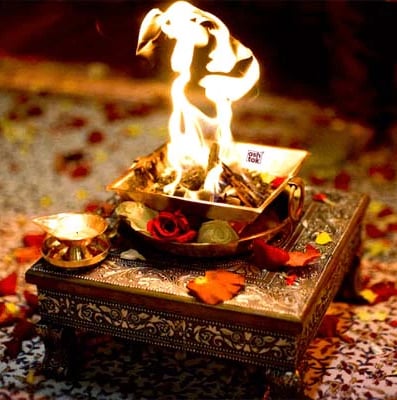Unveiling the Elegance of Hawan Kunds for Sacred Rituals
Introduction and importance of hawan kunds in hindu rituals.


Introduction
A hawan kund is a sacred fire pit used in Hindu rituals, particularly for performing hawan or homa, which involves making offerings into the fire as a form of worship. The hawan kund is typically constructed of metal, clay, or brick and is designed to hold the sacred fire, which symbolizes the divine presence. During the ceremony, specific herbs, grains, and other items are offered to the fire while chanting mantras, creating a spiritual atmosphere that purifies the environment and invokes blessings from deities. The ritual is believed to bring prosperity, health, and spiritual upliftment to participants, making the hawan kund an essential element in various religious ceremonies and celebrations. This potent symbol of faith not only fosters communal bonding but also connects devotees with the essence of creation through the transformative power of fire.
Importance of Hawan
Hawan, a significant ritual in Hinduism, involves the offerings made into a sacred fire, known as Agni. It serves multiple purposes, primarily to invoke divine blessings and purify the environment. The act of performing hawan is believed to create a spiritual connection between the devotee and the divine, fostering an atmosphere of higher vibrations. Participants offer various materials, such as grains, ghee, and herbs, which are symbolic of sacrifices made for spiritual upliftment and are thought to cleanse the individual of negative energies. Furthermore, hawan rituals are often performed during important life events—like weddings, housewarming ceremonies, and religious festivals—enhancing the sanctity of the occasion. This ancient practice not only strengthens communal bonds but also rejuvenates faith and devotion among participants, making it an integral part of Hindu worship and tradition.
Types of Hawan Kunds
Hawan kunds, essential for conducting fire rituals in various spiritual practices, come in several types made from diverse materials, each serving distinct purposes. Clay hawan kunds are popular for their natural properties, providing an earthy connection during ceremonies. Iron kunds are robust and durable, making them suitable for regular use, while steel kunds are favored for their sleek design and resistance to corrosion. Copper hawan kunds are believed to harness and amplify spiritual energies, adding a touch of traditional elegance. Brass kunds, with their unique aesthetic and warm tones, are often used in rituals seeking abundance and prosperity. Each type of hawan kund not only enhances the ritualistic experience but also reflects cultural significance and personal beliefs of the practitioners.
When comparing hawan kunds for home use versus those designed for temples, several factors come into play, including size and purpose. Home hawan kunds are typically available in small to medium sizes, allowing families to perform rituals and ceremonies within their living spaces. These kunds are often designed for personal worship and intimate gatherings. In contrast, temple hawan kunds are generally extra large, accommodating a greater number of participants and larger ceremonial needs. They are constructed to facilitate community rituals and are often elaborately designed to enhance the spiritual atmosphere of the temple. The choice between home and temple hawan kunds ultimately depends on the scale and context of the rituals being performed, ensuring that devotees can effectively connect with their spiritual practices in both personal and communal environments.
Conclusion
The hawan kund, a sacred fire pit, holds significant importance in Hindu rituals and ceremonies. It serves as a central element in various religious practices where offerings are made to invoke divine blessings. This ritualistic fire symbolizes purification and the connection between the material and spiritual realms. Participants offer oblations, such as ghee and grains, into the sacred flames, believing that their prayers are carried to the heavens. The hawan kund is often featured in auspicious events, such as weddings and housewarmings, reinforcing its role in fostering harmony, prosperity, and spiritual growth. Overall, the hawan kund not only enhances the sanctity of rituals but also acts as a medium for devotees to express their reverence and devotion to the divine. Its presence in Hindu traditions underscores the importance of fire as a purifying and transformative element in spiritual practices.
